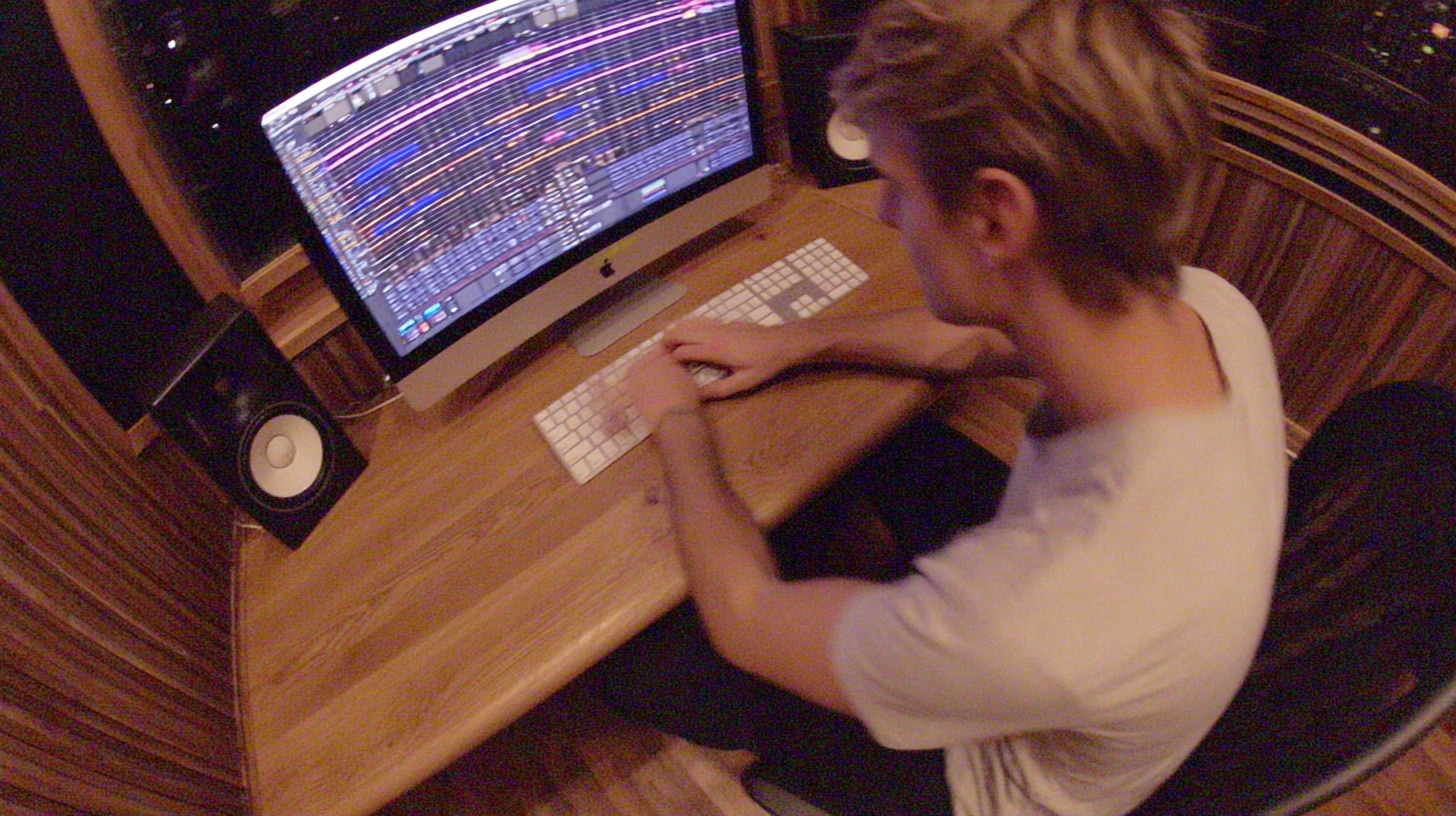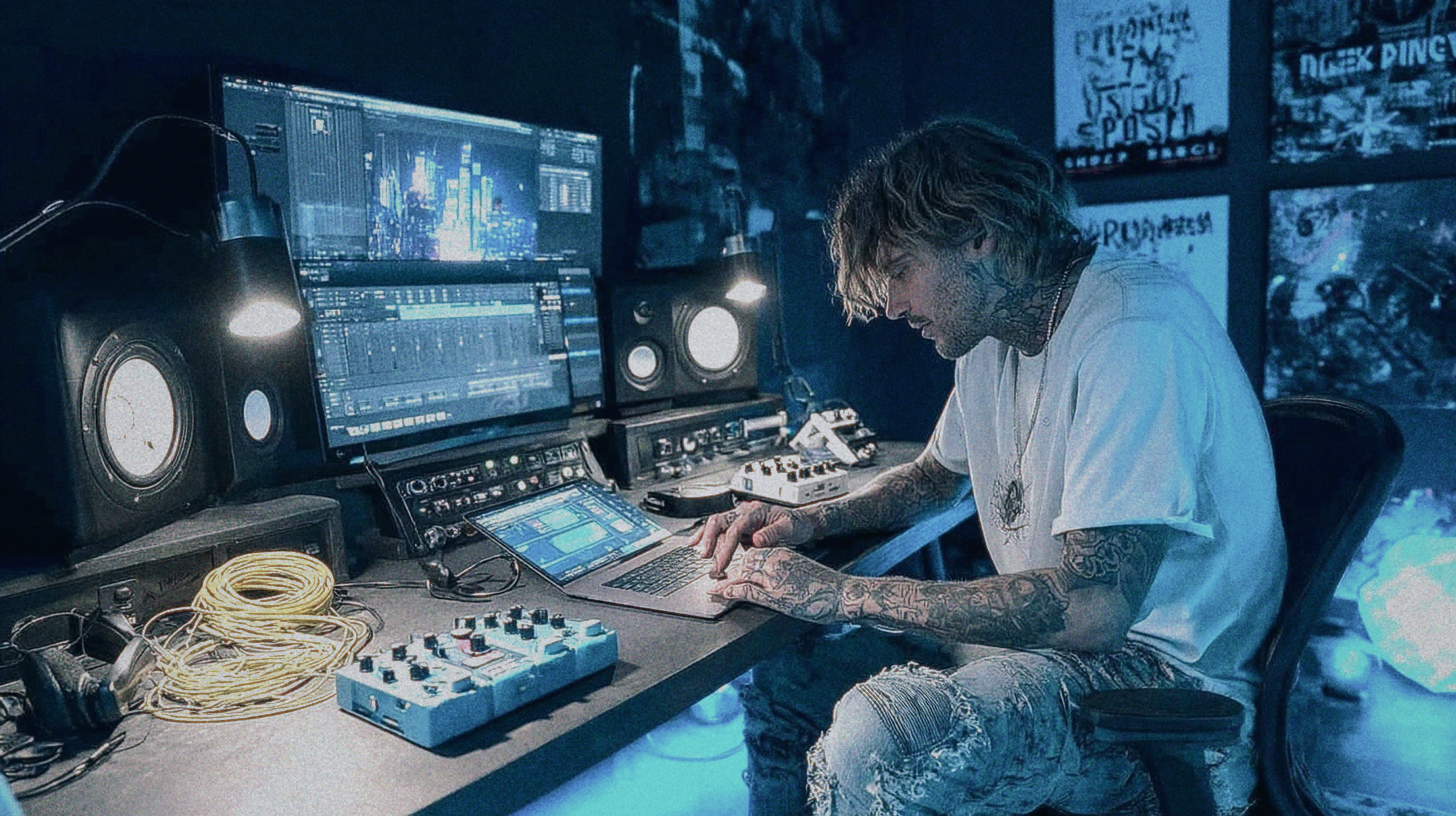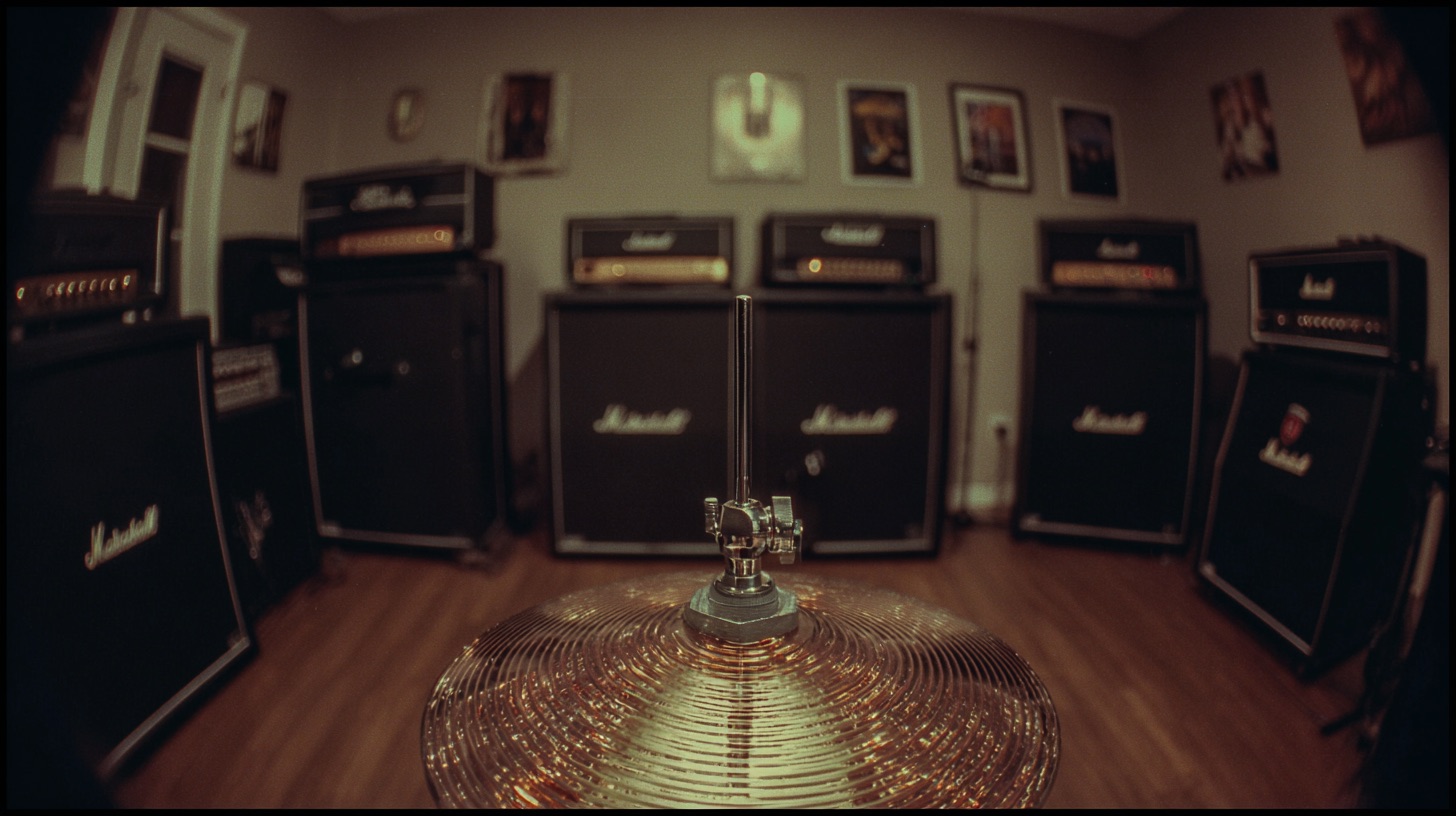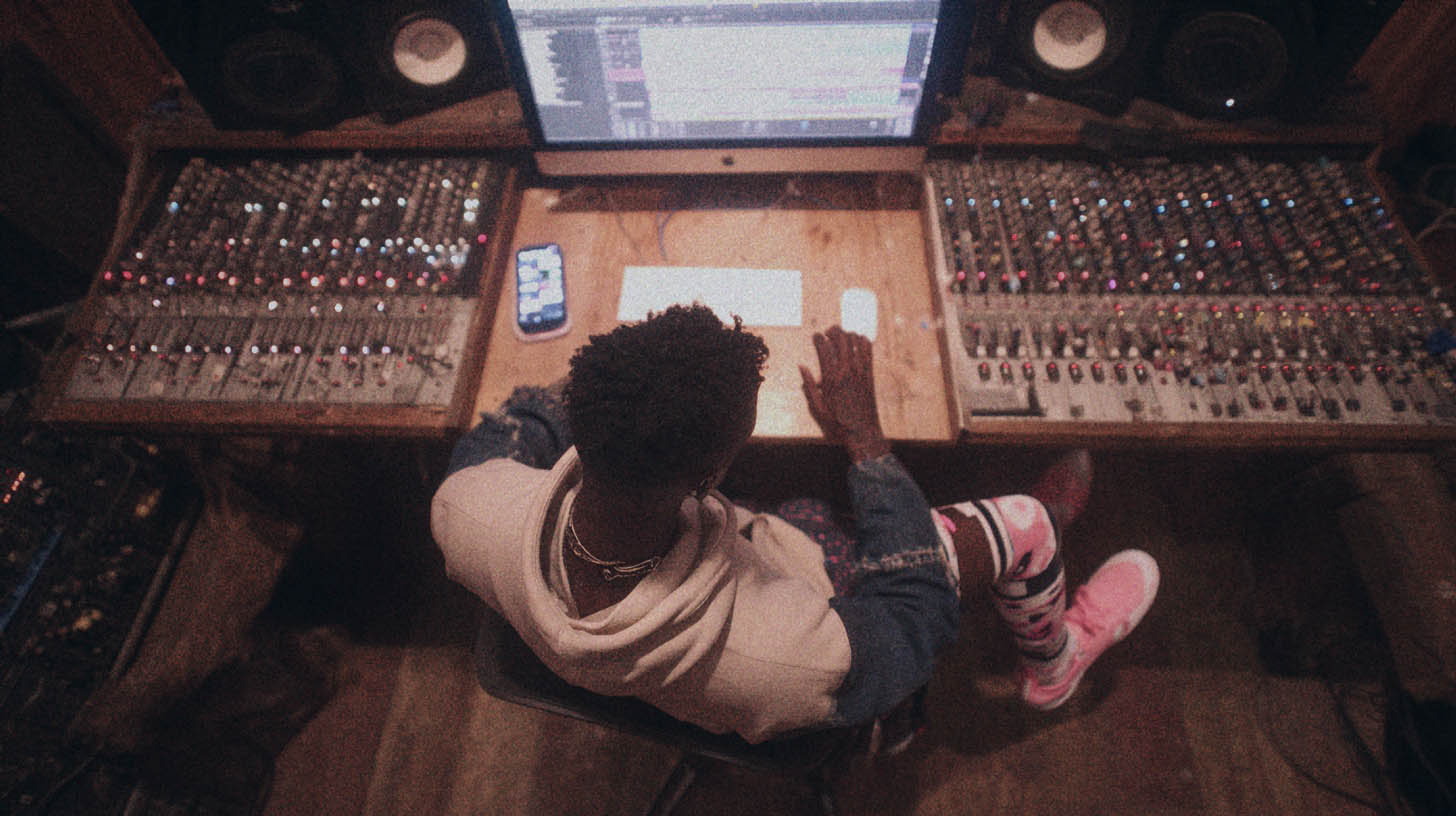
How the 1176 Compressor Crushes A Metal Mix
Nail The Mix Staff
The 1176. Just say the name, and audio engineers, especially those deep in the trenches of metal production, nod in approval. It’s not just a compressor; it’s an instrument of aggression, punch, and vibe. If you’re looking to make your metal tracks hit harder, cut through denser arrangements, and generally sound more "pro," understanding how to wield the 1176 is non-negotiable.
Forget gentle leveling; we’re talking about a FET compressor renowned for its lightning-fast attack time and distinctive sonic signature. Whether it's a hardware UREI 1176LN or one of the many stellar plugin emulations like the Waves CLA-76, Slate Digital FG-116, or Universal Audio's own 1176 Classic Limiter Collection, this beast is a staple in metal. Let’s dive into why and how you can use it to make your mixes absolutely monstrous.
What Makes the 1176 a Metal Monster?
So, why has the 1176 earned its legendary status in heavy music? It boils down to a few key characteristics that just work for aggressive genres.
Lightning-Fast Attack (When You Want It)
The 1176 is a FET (Field Effect Transistor) compressor, and one of its defining features is its incredibly quick attack time. We’re talking as fast as 20 microseconds (that’s 0.02 milliseconds!). On an 1176, the attack knob is somewhat counter-intuitive: turning it clockwise towards 7 makes it faster, while counter-clockwise towards 1 makes it slower (around 800 microseconds).
This speed is golden for metal. Need to clamp down on the initial transient of a snare to make it super tight? Or let the "pick" of a guitar transient poke through before controlling the body? The 1176 gives you that precise control.
The Glorious "All Buttons In" Mode (aka British Mode)
This is where the 1176 truly shows its wild side. Press all four ratio buttons (4:1, 8:1, 12:1, 20:1) simultaneously, and you unlock "All Buttons In" mode. The compression curve goes nuts, the ratio becomes… well, aggressive and program-dependent, and it introduces a very distinct, often explosive, type of distortion and harmonic excitement. It’s not subtle, but for adding grit and an almost "exploding" character to drum room mics, parallel drum busses, or even aggressive vocals, it's an iconic sound.
Characteristic Color and Saturation
Even when you’re not slamming it, the 1176 imparts a certain "color" thanks to its input and output transformers and Class A amplifier circuitry. Running audio through it, even with minimal gain reduction, can add a pleasing heft, presence, and subtle saturation that helps sources sit better in a dense metal mix. Different revisions and emulations (like the "Blue Stripe" Rev A known for more grit, versus the "Blackface" Rev E which is a bit cleaner but still punchy) offer slightly different flavors of this coloration.
Slamming Metal Drums with the 1176
Drums are the backbone of any metal track, and the 1176 is a go-to for making them punch, crack, and explode.
H3: Kick Drum Punch and Weight
For modern metal kicks, you often want both the clicky attack and a solid, weighty body.
- Settings: Try a slower attack for an 1176 (knob around 3-5, letting the initial "click" through) and a fast release (knob around 6-7, so it recovers quickly for the next hit). A ratio of 4:1 or 8:1 is a good starting point.
- Goal: To shape the envelope, add punch, and control dynamics without squashing the life out of it. Listen for how it brings up the sustain and body after the initial hit, which is vital for balancing the kick and bass.
- Plugin Power: The UAD 1176 Rev E or Waves CLA-76 "Blacky" are fantastic here.
H4: Snare Crack, Body, and Attitude
The snare needs to cut through walls of guitars. The 1176 is your best friend.
- Settings: For primary snare compression, a medium-to-fast attack (knob 4-6) can help shape the transient and bring out body. A fast release (6-7) keeps it snappy. To master this, it’s crucial to learn how to truly hear snare compression and the effect of these controls. Ratios of 4:1 or 8:1 work well for control. For more extreme smack, try 12:1 or 20:1.
- Parallel Snare Annihilation: This is where the fun begins. Send your snare to an aux track, slap on an 1176 (the Waves CLA-76 "Bluey" or Arturia Comp FET-76 excel here), and go full "All Buttons In" mode. Or, use a 20:1 ratio with fast attack and release. Crush it until it’s a distorted, sustained mess, then blend that underneath your main snare. Instant size and aggression! This is a classic use of parallel compression, which is essential for adding size and aggression without destroying the core sound.
Room Mic Destruction (The Good Kind)
Want that massive, breathing, explosive drum room sound you hear on countless metal records?
- Settings: "All Buttons In" mode is practically made for this. Alternatively, a 20:1 ratio with the fastest attack (knob at 7) and fastest release (knob at 7) will get you into similar territory. Drive the input hard.
- Goal: Create a larger-than-life, pumping ambience. Blend this underneath your close-mic'd drums to add depth and power. It can sound wild on its own, but in the mix, it’s magic.
Aggressive Vocals That Cut Through Metal Guitars
Metal vocals, whether screamed, growled, or clean, need to be upfront, intelligible, and powerful.
Taming Dynamics & Adding Consistent Presence
The 1176 excels at pinning a vocal in place, making every word audible.
- Settings: A fast attack (knob around 5-7) will catch peaks effectively. Release can be medium to fast (knob 5-7), often timed to the rhythm of the vocal phrase. Ratios of 4:1 or 8:1 are common.
- Goal: Smooth out dynamic inconsistencies and bring the vocal forward. The coloration can also add a nice presence.
- Pro Tip – Serial Compression: Try two 1176s in a row. The first (e.g., UAD 1176LN Rev E) with a faster attack and higher ratio (8:1 or 12:1) to catch just the loudest peaks (a few dB of GR). The second (e.g., a CLA-76 "Bluey") with a slower attack, lower ratio (4:1), and more consistent GR to shape the body and provide overall leveling.
This kind of dynamic control is a cornerstone of how to mix metal vocals that sit powerfully in a dense arrangement.
Parallel Vocal Aggression
Just like with drums, parallel compression can add excitement and perceived loudness to vocals without making them sound overly squashed.
- Settings: Send your lead vocal to an aux. Insert an 1176 (try the Softube FET Compressor or Slate FG-116 "Blue Vintage") and get aggressive – "All Buttons In" or a high ratio (12:1, 20:1) with fast attack and release.
- Goal: Blend this heavily compressed signal subtly underneath the main vocal. It adds density, harmonic richness, and helps the vocal cut through without sacrificing the dynamics of the main performance.
Guitars and Bass: Shaping the Heavy Wall of Sound
While often used less aggressively on distorted guitars, the 1176 still has its place.
Tightening Distorted Guitars (Subtly)
If your rhythm guitars are already heavily saturated from amps and pedals, you might not need much compression. However, an 1176 on a guitar bus can provide some glue.
- Settings: Try a relatively slow attack for an 1176 (knob around 3-4) to let the pick attack shine, a fast release (6-7), and a low ratio like 4:1. Aim for just a few dB of gain reduction on the loudest chugs.
- Goal: Gently even out dynamics between palm mutes and open chords, and add a touch of cohesive punch to stereo guitar groups.
Bass Guitar: Consistency and Growl
The 1176 can really make a bass guitar sit perfectly and provide a solid foundation.
- Settings: A medium attack (knob around 3-5) lets the initial pick or finger sound come through before the compression kicks in. Release can be medium (around 4-5), timed to the groove. Ratios of 4:1 or 8:1 are common.
- Goal: Even out the volume of different notes, add sustain, and bring out harmonic richness and growl, especially if you drive the input a bit.
- Parallel DI Grit: For an aggressive bass tone, a great pro-level trick is to start by splitting your DI bass signal. Keep one clean, and on the other, slam it with an 1176 in "All Buttons In" mode (or high ratio/fast settings) to generate gnarly distortion and harmonics. Blend to taste.

100+ Insanely Detailed Mixing Tutorials
We leave absolutely nothing out, showing you every single step
Hardware vs. Plugins: Does It Matter for Metal?
The original UREI/Universal Audio 1176 hardware units (especially sought-after revisions like D, E, and F) are legendary for a reason. But for those in the box, the 1176 plugins vs. hardware debate is more relevant than ever. Top-tier plugin emulations from companies like Universal Audio (their 1176 Classic Limiter Collection is phenomenal), Waves (CLA-76), Slate Digital (FG-116), Arturia (Comp FET-76), and Softube (FET Compressor) are incredibly convincing.
For metal production today, you can get fantastic, aggressive, and punchy results entirely in the box. The key is to learn the sound and behavior of an 1176 – how the attack, release, and ratio controls interact, and what "All Buttons In" really does to a signal. The specific plugin often matters less than your understanding of how to use it.
Putting the 1176 to Work (And Learning More!)
The 1176 is a true powerhouse, a veritable Swiss Army knife for adding punch, aggression, and character to your metal mixes. From subtle glue to outright sonic destruction, its versatility is unmatched. Experiment with these starting points on your drums, vocals, bass, and even guitars. Pay attention to how the input level dramatically affects the compression character, and don't be afraid to push it.
But… knowing the tool is one thing. Seeing how seasoned metal producers wield it in the heat of a real session? That’s next level. Imagine watching the actual producers behind albums from bands like Gojira, Periphery, Meshuggah, and Trivium dial in their 1176 emulations (or hardware!), explaining why they’re choosing specific settings for that kick, or that vocal, in that song. Nail The Mix offers exactly that. Each month, you get the full multitracks from a massive metal song and watch the original producer mix it from scratch, sharing every technique and decision. If you're serious about taking your metal mixes from good to pro, and want to see how tools like the 1176 fit into the bigger picture, it's time to Unlock Your Sound: Mixing Modern Metal Beyond Presets.
Now go make something heavy!
Get a new set of multi-tracks every month from a world-class artist, a livestream with the producer who mixed it, 100+ tutorials, our exclusive plugins and more
Get Started for $1





